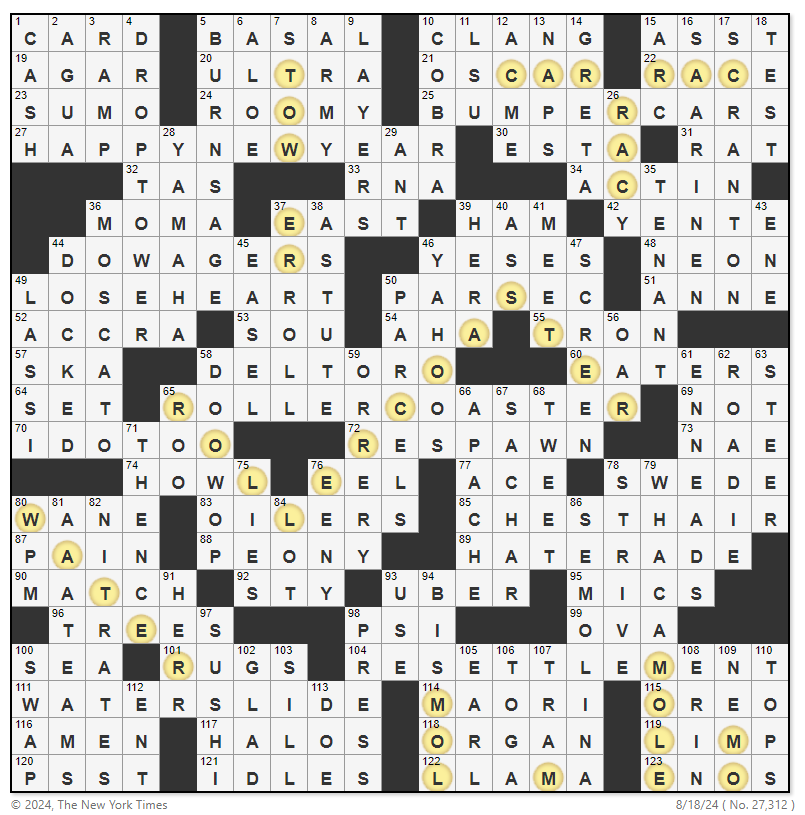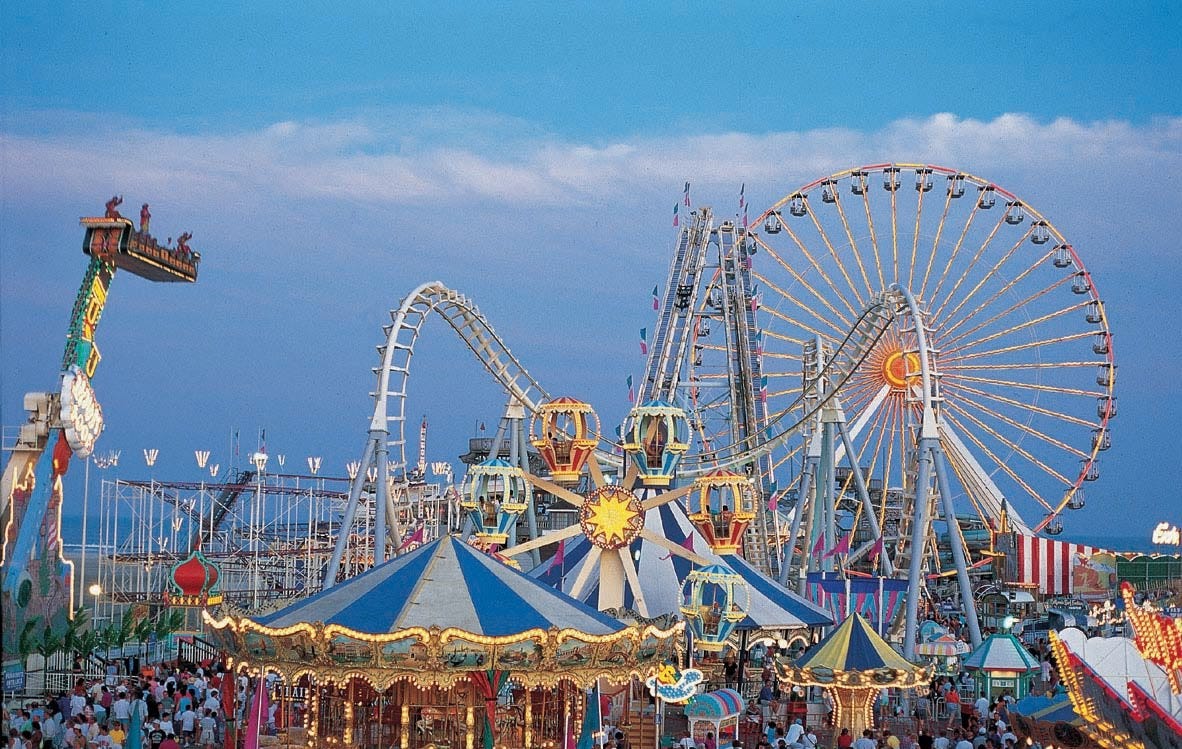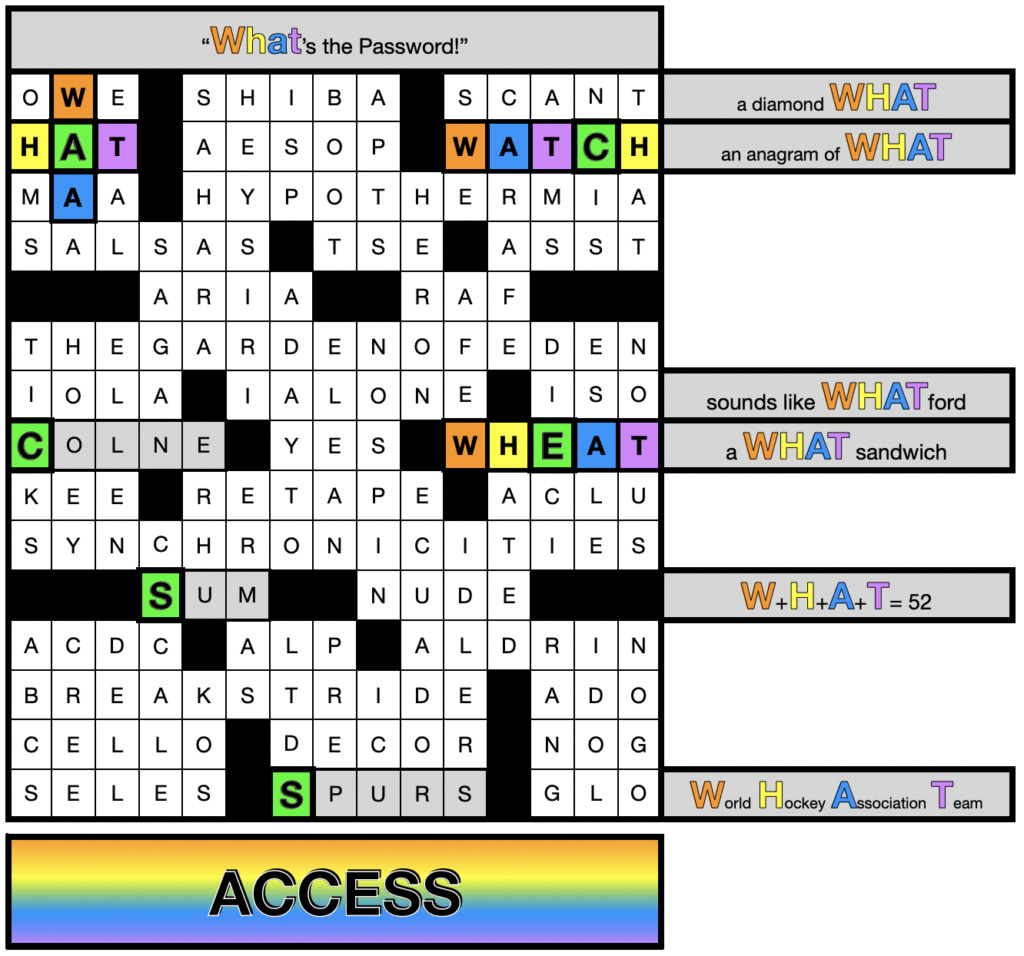I’ve spent some time studying crosswords like a biologist, figuring out how each species works. When I did the Ubercross Abecedaria, it was a tribute to all those types, or as many of them as I could scale up to a 125x125 format. But over the last few years, I’ve seen what seems to be a new type of crossword being born.
A good example of this new type is Rebecca Goldstein and Will Nediger’s “For Your Amusement” crossword from the Sunday New York Times, August 18, 2024:
This puzzle’s theme is amusement park attractions, and it has five such attractions as answers, also represented visually by circled letters. What makes the “multi-trick” crossword unique is that each theme answer involves a different visual trick.
The upper right corner shows three C-A-Rs bumping into each other, signifying BUMPER CARS. The upper left corner, with DROP TOWER, drops the letters in T-O-W-E-R through one of the black-square rows. ROLLER COASTER? The letters in ROLLER COASTER take a roller coaster-like path through the center. W-A-T-E-R slides down and to the right for WATERSLIDE, and the letters in M-O-L-E pop up from the bottom at various heights, evoking a game of WHAC-A-MOLE.
A simpler crossword might be themed around “crashes,” for instance, and feature multiple strings butting into each other the way C-A-R does in this puzzle. You could show, say, the letters in FORD and KIA colliding with each other—signifying a car crash—the letters in MAC and PC doing the same (a computer crash) and ditto AMAZON and EBAY (a dot-com crash).
But in “For Your Amusement,” Goldstein and Nediger use that visual device once and then move on. The form of their tricks is ever-changing, but there is a theme to the crossword—an amusement park, a subject that’s visually heterogeneous by its nature.
Will Nediger has made a lot of these “multi-tricks”—the style of puzzle first came to my notice by perusing his blog, Bewilderingly. He’s done plenty of other types too, but his frequent use of this one got my attention.
Last week’s installment of Matt Gaffney’s Weekly Crossword Contest, by special guest Ben Chenoweth, was a metapuzzle with a similar “multi-trick” idea. This one was highly challenging, but it shows what the form can do.
The contest is a metacrossword, where solvers are asked to provide one additional answer that aspects of the puzzle point to. For this installment, titled “What’s the Password!”, solvers were asked to provide a six-letter meta-answer.
A hint was in the title’s punctuation. It’s not asking us “What’s the password?”, it’s telling us that the password is WHAT. What could that mean? Well, in this case, it meant six different things—three of them visible in the grid itself, three of them visible in the clues.
The first, second, and fourth letters of the answer are found by watching the behavior of WHAT’s letters in the grid. They form a diamond around the letter A in the upper left corner, they’re anagrammed with the letter C near the upper right (for WATCH), and they’re hidden more openly in WHEAT at middle right, bracketing an E.
The remaining three key answers all involve the clues instead. COLNE (middle left) is clued as Watford’s river, and the “Wat” in Watford sounds like what.
The 52-Across clue for SUM is complex: “Result of adding four numbers in a simple alphabet cipher, say (B=2, C= 3, etc.).” But if we’re on the lookout for W-H-A-T at this point, we might try giving its letters that treatment, which would give us 23+8+1+20, or 52. And this is the 52-Across clue, so that can’t be a coincidence. (Lower left.)
Finally, SPURS is clued as a World Hockey Association team, and the initials from that clue spell W-H-A-t. (Lower right.)
Taking the A, C, and E from the grid-focused effects, adding in the first letters of COLNE, SUM and SPURS (C, S, S), and putting everything in grid order gives us the six-letter word ACCESS, which is the final answer.
Hey, I said it was tough! Lots of solvers would probably prefer the first puzzle, with all its helpful circles to give you some hint what’s going on. Still, the idea that one puzzle can use tricks we’d normally see in five or six different puzzles seems like a form tailor-made for our high-speed, chaotic everyday lives.
I’m busy, you know? Just inject all the visual devices into my eyeballs!





